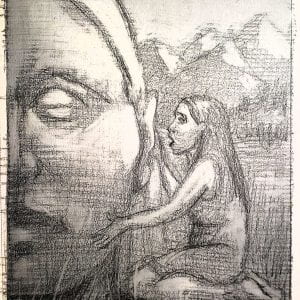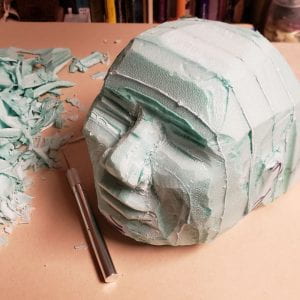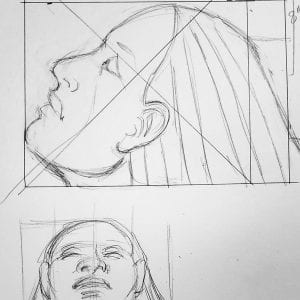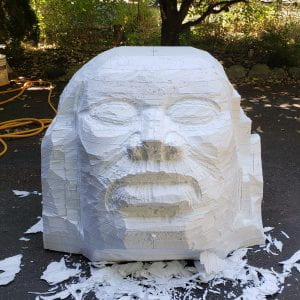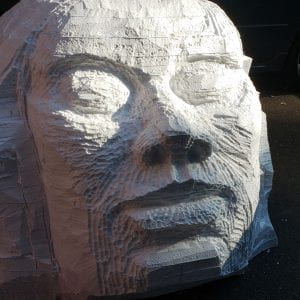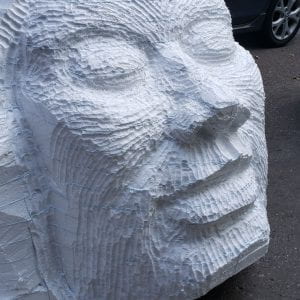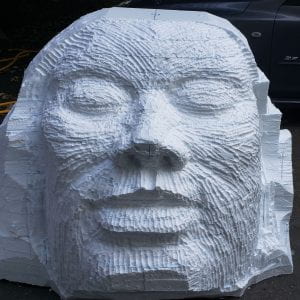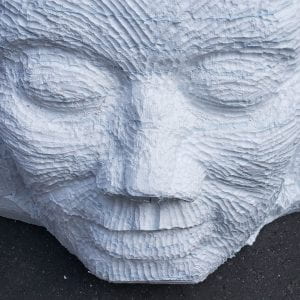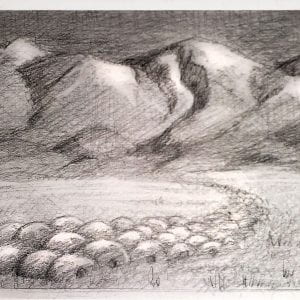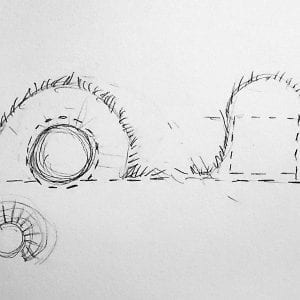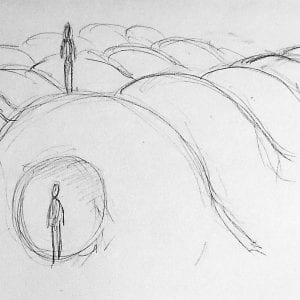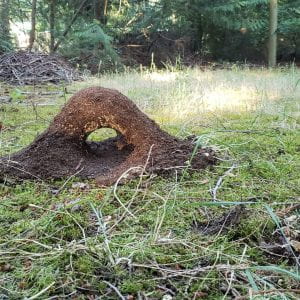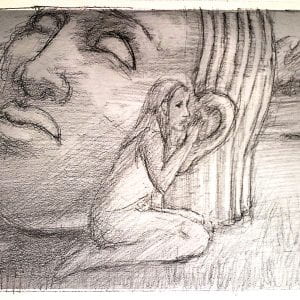This summer was full of experimentation and considering materiality and meaning in my work.
The main goal was to finish workshopping installation ideas for what I’ve been calling my Boundaries project. Each of these pieces was created by ripping up a facsimile map of Montana, circa 1881, and collaging it onto canvas in the shapes of each reservation in the state. Each piece was then lashed to a whitewashed wood frame with strips created from the treaties that established that reservation, mimicking hide stretching frames. When I first envisioned this project, the idea was to install it in a circle on ground/floor but when I did that, I wasn’t satisfied with the way that the viewer looked down on the work. So this summer has been spent workshopping a more elevated install idea and then making that happen. .
Studio IV: The Boundaries Project
Studio IV: Responding to the Marceau-Ponty Reading
When reading this assignment, I was struck by the idea of looking at the world in ways other than with our eyes. In many ways, as artists, we “see” the world through our hands or bodies.
Print Workshop A
The print workshop, this summer, was very productive for me. In thinking about the invisibility of Indigenous bodies and how certain printing methods leave traces of shapes in the form of embossing, I began to think about what this said for the shape that made the embossment and what embossment as an artifact might mean in my practice. I was also interested in exploring symbolism and how multiples of a symbol could work in harmony with itself or in tandem with another symbol to impart a message.
VIBGYOR: Color for Studio
In this workshop, I was finally able to experiment with making pigment from moss harvested in Montana in 2019. This is a type of moss that was used by the Bitterroot Salish and Qlispe’ to make pigment and to stain articles of clothing, skin, hides, and other items.
Felting/Weaving In the Expanded Field
Weaving was another technique that I’ve wanted to integrate into my practice for awhile. In this workshop, I used more facsimile maps of Montana, circa 1881, to weave various items. I also used a Salish weaving technique with one of the experiments.
Other Media
I spent a lot of time working on workshop projects but did get a bit of time to paint. I also worked on other items as time permitted.
Painting
I’ve been experiencing some frustration with my painting practice lately. Specifically, I’ve been looking for ways to create work that doesn’t fall into cliche’ or stereotype when using distinctly Indigenous symbology. After looking through Fritz Scholder’s work (again) and reading what he had to say on the subject, I started to consider how the use of symbology and multiples worked in my print practice and pulled some of that into my painting work. I also started to consider what I think paint (as a medium) does best, what parts of my practice are based in my indigenous identity, what parts are based in my non-indigenous identity, and what it is that I want to say with paint.

The Long Walk
I’m still continuing to work on this sculpture as time permits. For more on this work, please click here.


















